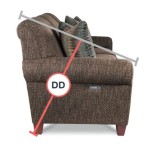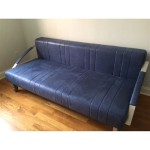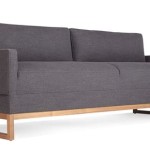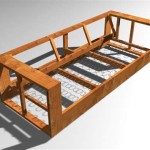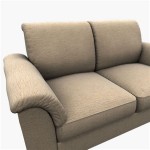Low Seating Sofa Ideas: A Guide to Grounded Comfort and Stylish Living
Low seating sofas have steadily gained popularity, shifting from a niche design element to a sought-after centerpiece in modern homes. Their appeal lies in their inherent ability to create a relaxed, inviting atmosphere while simultaneously offering a unique aesthetic that can elevate the overall style of a living space. The defining characteristic of these sofas is, predictably, their low profile, placing the seating area significantly closer to the floor than traditional sofas. This design choice has a cascading effect, influencing everything from perceived room size to the overall comfort and social dynamics within the space.
Understanding the nuances of low seating sofas requires considering various factors, including construction materials, available styles, and suitable interior design applications. This article offers a comprehensive exploration of low seating sofa ideas, covering key aspects to inform informed design choices for homeowners and decorators alike.
Understanding the Benefits of Low Seating
The advantages of incorporating low seating sofas extend beyond mere aesthetics. A primary benefit is the creation of a sense of spaciousness. By lowering the visual horizon within a room, the ceiling appears higher, and the overall volume feels more expansive. This is particularly beneficial in smaller apartments or rooms with lower ceilings where maximizing the perception of space is crucial.
Furthermore, low seating promotes a more relaxed and informal atmosphere. The lower vantage point encourages a sense of grounding and comfort, fostering a more intimate and conversational setting. This makes them ideal for spaces intended for lounging, relaxation, and casual gatherings.
The visual impact of low seating sofas should not be underestimated. They offer a contemporary and stylish alternative to traditional sofas, adding a touch of sophistication and visual interest to any room. Their sleek lines and minimalist design can complement a wide range of interior styles, from modern and Scandinavian to bohemian and eclectic.
Exploring Different Styles and Materials
The market for low seating sofas is diverse, offering a wide array of styles to suit various design preferences. Sectional low seating sofas are a popular choice, providing ample seating space and modular flexibility. These sofas typically consist of multiple pieces that can be arranged in different configurations to fit the specific needs of the room.
Platform sofas, another common style, feature a solid base that supports the cushions, creating a clean and streamlined look. These sofas often have a minimalist design and are well-suited for modern and contemporary interiors.
Modular low seating sofas offer the ultimate in customization. These sofas consist of individual modules that can be combined and rearranged to create a seating arrangement that perfectly fits the space and the user's preferences. This is a great option for those who like to frequently change up their living space.
Material selection plays a crucial role in both the aesthetics and the durability of the sofa. Leather low seating sofas offer a luxurious and sophisticated look, adding a touch of elegance to any room. Leather is also a durable and easy-to-clean material, making it a practical choice for households with children or pets.
Fabric low seating sofas offer a wider range of colors and textures, allowing for greater design flexibility. Cotton, linen, and velvet are popular fabric choices, each offering a unique look and feel. Fabric sofas tend to be more budget-friendly than leather options.
For outdoor use, materials like weather-resistant wicker, teak, or aluminum are preferable. These materials can withstand the elements and maintain their appearance over time.
Integrating Low Seating Sofas into Your Space
Integrating low seating sofas seamlessly into a room requires careful consideration of the surrounding decor and layout. Consider the room's size and shape when selecting the size and configuration of the sofa. In smaller rooms, a smaller sectional or a loveseat may be more appropriate, while larger rooms can accommodate larger sectionals or multiple sofas.
The color and texture of the sofa should complement the existing color scheme and design style of the room. Neutral colors such as gray, beige, and white are versatile and can be easily paired with other colors and patterns. Adding pops of color through throw pillows, blankets, and artwork can create a more dynamic and visually appealing space.
Pay attention to the surrounding furniture and accessories. Low coffee tables are essential to maintain a proportionate scale with the lower seating height. Taller side tables can be used to add visual interest and provide a convenient surface for lamps, books, and drinks. Rugs can help to define the seating area and add warmth and texture to the room. Consider a rug large enough to anchor the entire seating arrangement, with at least the front legs of the sofa resting on the rug.
Lighting plays a crucial role in creating the desired ambiance. Floor lamps are a great option for providing ambient lighting and can be positioned strategically to highlight the sofa and surrounding decor. Table lamps can add a more intimate and focused light source, perfect for reading or relaxing. Overhead lighting should be carefully chosen to avoid casting harsh shadows and to create a warm and inviting atmosphere.
Adding plants can bring a touch of nature indoors and create a more relaxing and inviting space. Choose plants that are well-suited to the lighting conditions and that complement the overall design style of the room. Larger plants can be used to fill empty corners or to create a visual barrier, while smaller plants can be placed on shelves or coffee tables to add a touch of greenery.
Considerations for Comfort and Functionality
While aesthetics are important, comfort and functionality should not be overlooked. When choosing a low seating sofa, consider the depth and firmness of the cushions. Deeper cushions provide a more relaxed and loungy feel, while firmer cushions offer more support. The height of the backrest is also important, as it can affect the level of support and comfort.
The construction of the sofa is crucial for its durability and longevity. Look for sofas with a strong frame made of solid hardwood or steel. The suspension system, which supports the cushions, should be made of high-quality materials such as sinuous springs or webbing. The cushions should be filled with a combination of foam, down, or fiberfill for optimal comfort and support.
Consider the practical aspects of owning a low seating sofa, such as cleaning and maintenance. Leather sofas are generally easier to clean than fabric sofas, but they may require special cleaning products. Fabric sofas can be vacuumed regularly to remove dust and dirt. Removable cushion covers are a plus. Check fabric codes before cleaning.
Think about how the sofa will be used. If it will be used primarily for lounging and relaxing, a deeper sofa with softer cushions may be the best choice. If it will be used for more formal gatherings, a firmer sofa with a more upright backrest may be more appropriate. If the sofa will be used by children or pets, choose a durable and stain-resistant material.
Accessorizing with throw pillows and blankets can enhance the comfort and functionality of the sofa. Throw pillows can provide extra support and cushioning, while blankets can add warmth and texture. Choose pillows and blankets that complement the color scheme and design style of the room.
Low Seating Sofas and Accessibility
While low seating sofas offer a stylish and comfortable seating option, it's essential to consider their accessibility for individuals with mobility limitations. The lower seat height can pose challenges for some people, particularly those with joint pain, arthritis, or other physical limitations that make it difficult to stand up from a low position.
When considering a low seating sofa, it's prudent to assess the specific needs and abilities of all potential users. If accessibility is a concern, explore options that provide more support and easier ingress and egress. This might involve choosing a low seating sofa with slightly higher legs or adding firmer cushions to raise the seat height slightly.
Assistive devices, such as lift-assist cushions or furniture risers, can also be used to improve accessibility. These devices can provide additional support and leverage, making it easier for individuals to stand up from a low position. Strategically placed armrests can also provide additional support and stability.
In some cases, a traditional sofa with a standard seat height may be a more suitable option for individuals with significant mobility limitations. It's essential to prioritize safety and comfort when choosing seating for individuals with specific needs.
Ultimately, the decision to incorporate a low seating sofa should be based on a comprehensive assessment of individual needs, design preferences, and practical considerations. By carefully evaluating these factors, it's possible to create a stylish and comfortable living space that is accessible and enjoyable for everyone.

Low Seating Living Room Furniture Ideas By Fama Without Sofa Modern

Floor Seating Ideas Add Casual Options At Home

9 Seating Alternatives For A No Sofa Living Room Houzz

Floor Seating Ideas For Comfort And Style Design Cafe

25 Comfortable Living Room Seating Ideas Without Sofa Floor Cushions

Seating Ideas For Your Home Design Cafe

Low Seating Furniture Ideas In Modern Times

35 Coolest Low Seat Sofas For Your Living Room Digsdigs

Floor Couch Ideas The Unconventional Living Room Furniture Seating Sofa Design Low

9 Seating Alternatives For A No Sofa Living Room Houzz


